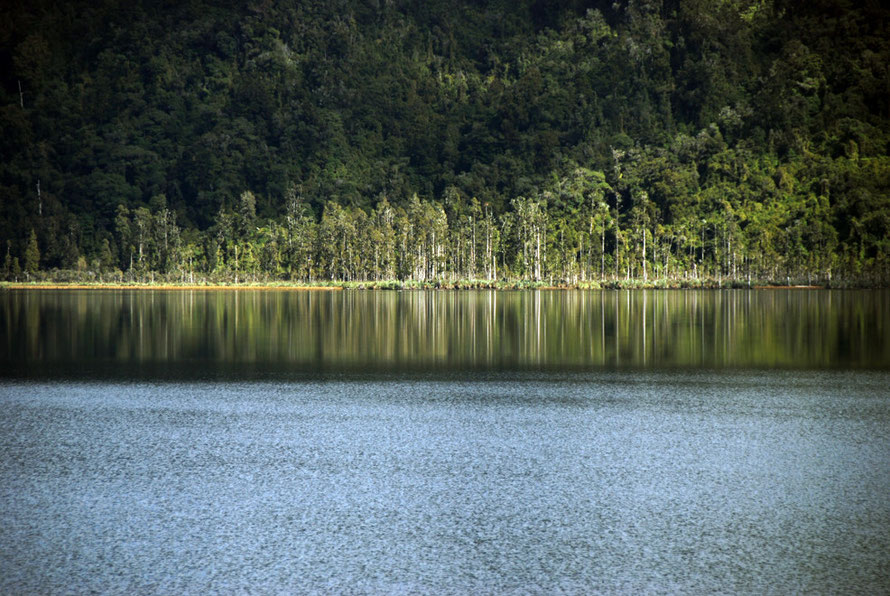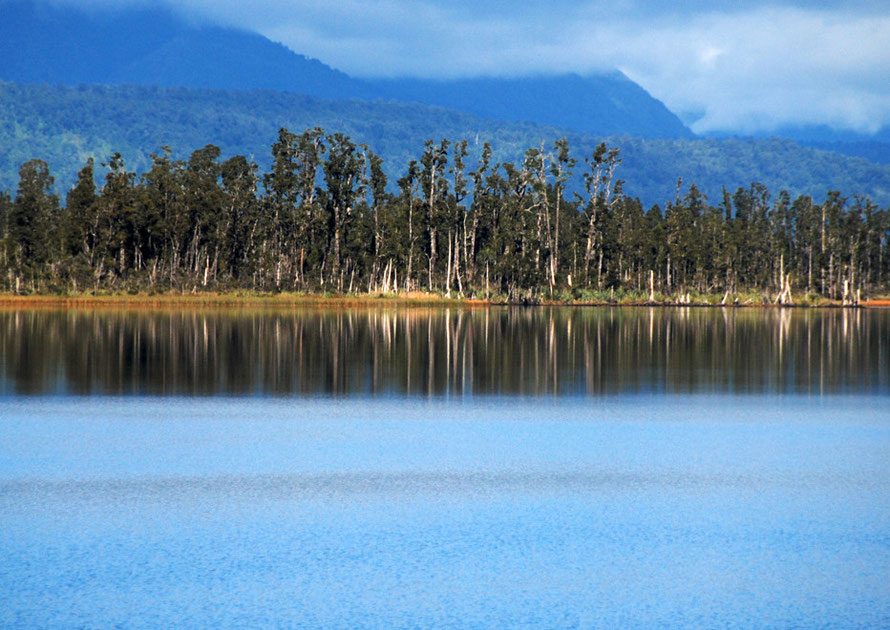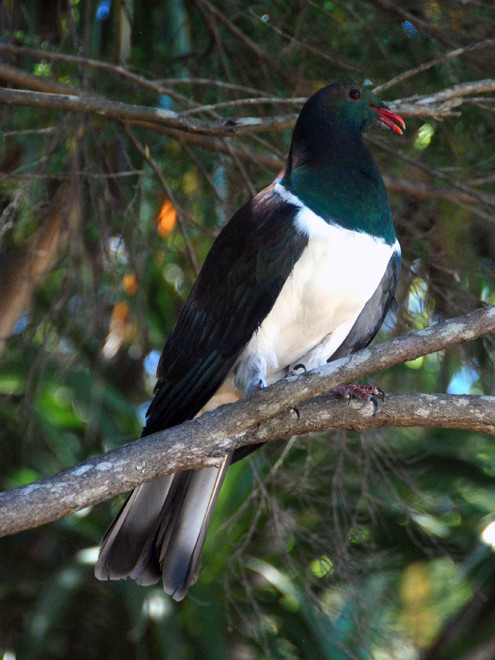VI. Kahikatea Swamp Forest

Kahikatea swamp forests on the West Coast like that at the southern end of Lake Ianthe/Matahi 'the nearest replica of the type of primeval forest that would have existed 80 million years ago at the time of separation from Australis (Gibbs Ghosts of Gondwana).
Once called 'white pines' they differ from pines because they do not have woody pine cones.
Instead, their female cones are reduced to single scales that ripen into solitary seeds surrounded by or sitting on brightly coloured, fleshy structures that attract birds. Te Ara
'Dense forests of kahikatea (Dacrycarpus dacrydioides) once covered the more fertile river valleys where flood events periodically rejuvenated the soil. However, this type of country was often the first cleared for farms and today only approximately 100 km2 of this forest type remain. Matai (Prumnopitys taxifolia) and totara (Podocarpus totara) were also abundant in these areas but are now restricted to two main remnants (totaling 6 km2) in the Waiho and Whataroa Valleys.'
From the WWF entry on the Westland rain forests in the Encyclopedia of the Earth.

The kahikatea has separate male and female (dioecious) trees and is New Zealand's tallest tree. It can grow up to 55 metres (180 ft) (a living specimen has achieved 66.5 metres/218 ft) and live for 500 hundred years. Of the New Zealand podocarps it can be traced furthest back into the fossil record - perhaps to Mesozoic period 200 MYA (RFBP:50).
The trees grow in wet ground on lake and river marshes. They can support themselves through their interlocked root mats on semi-liquid peat. The spongy roots 'enable them to oxygenate their rootlests and thus survive in waterlogged soils that few other trees can tolerate' (RFBP:50).

A single tree can produce 800kg of fruit a year, vital food for birds such as tuis, bellbirds and pigeons.
Kahikatea forest is increasingly rare, particularly in the North Island, where it was cleared for its timber (it has no odour and alouth not very durable was excellent for butter boxes) and for the flat farmland that could be developed from drained marshes.
In the South Island acreages of dense kahikatea stood at 4,500Ha in 1987 and it is said to be 'as scarce as kauri' and more vulnerable to logging due to a lack of protection (ibid:50).
The seed covers (aril) ('koroi' in Maori) were eaten by Maori and heartwood charcoal was used to make a tattooing (ta moko) pigment (Wikipedia). The seeds only occur on the female trees.


